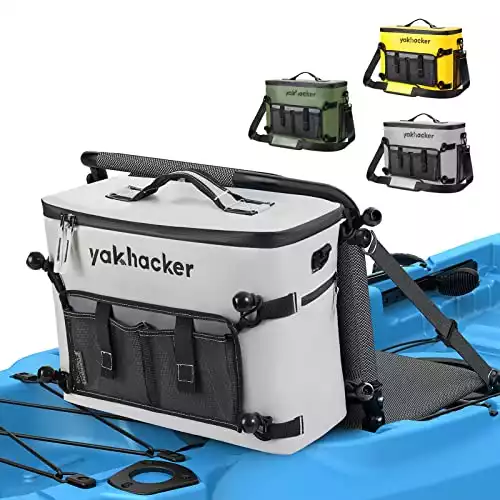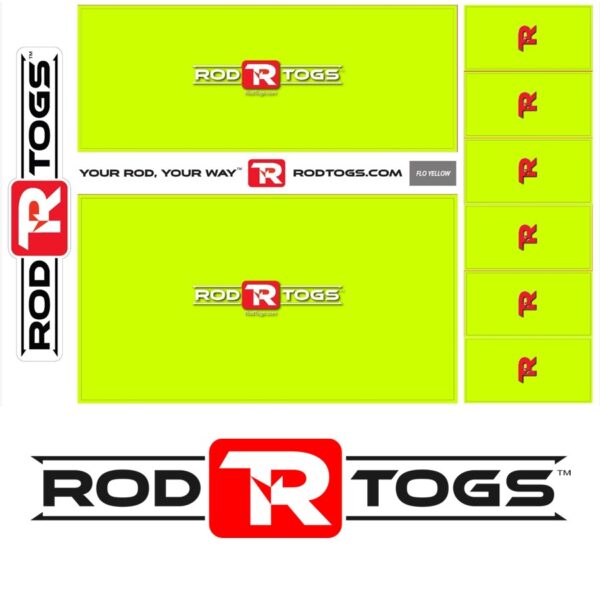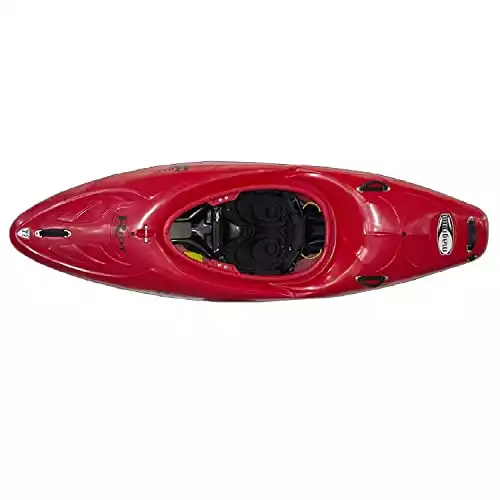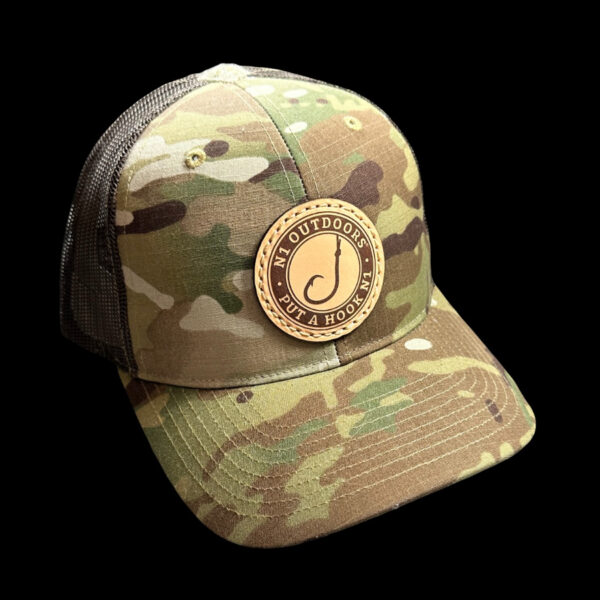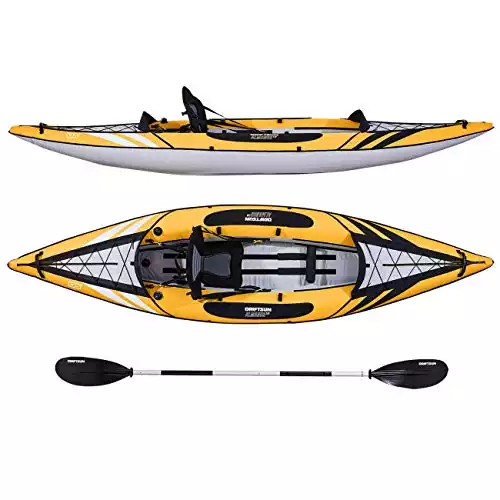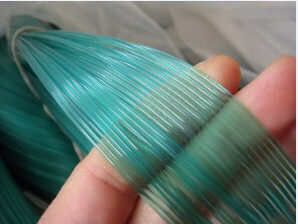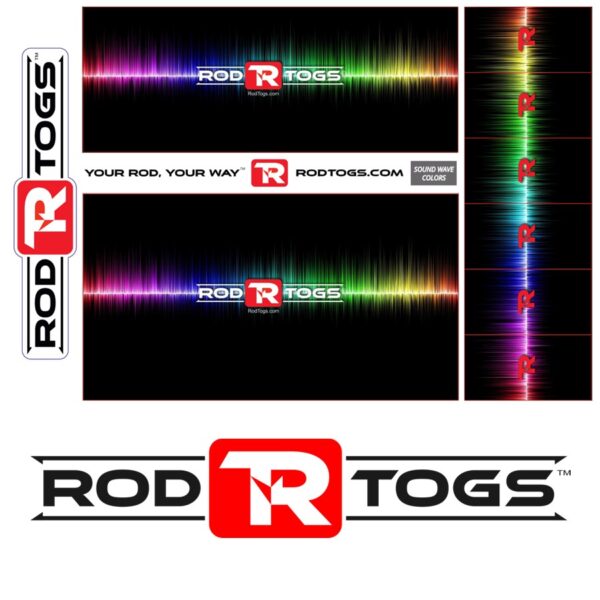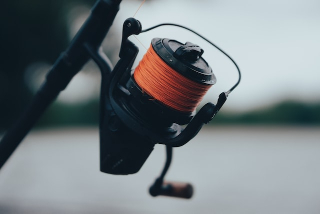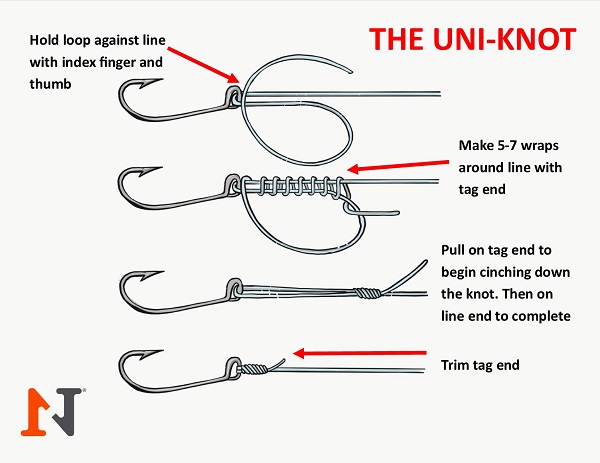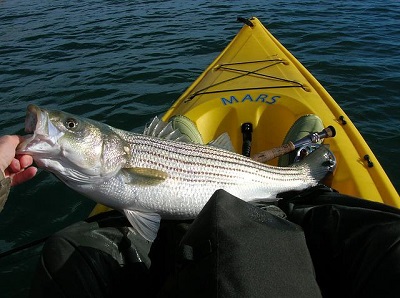Despite what some may believe, there are, in fact, many different types of kayaks to choose from depending on your kayaking goals.
These different kayak types have distinct features that can impact function and should be selected for your specific needs.

Some kayaks are longer or wider to promote increased straight-ahead speed and stability in calm waters. On the other hand, if you see yourself in a whitewater situation, then a short, stubby, and maneuverable craft will serve you best. So which type should you choose? Keep reading!
Well, don’t get intimidated by what is ultimately a simple boat! Let’s take a look at the different types of kayaks so you can find out for yourself!
Types Of Kayaks
Lucky for you, this guide will provide guidance and information surrounding some of the main kayak types, to direct you toward the best kayak for your next adventure!
You can click on the links below to jump straight to the various types:
Sit-In Kayaks

Sit-in kayaks are probably what you imagine when you picture a kayak.
Also called recreational kayaks, sit-in kayaks have one seat that is in the center of a boat that usually ranges from 8-12 feet long.
Sit-in kayaks are designed for comfort; with the bodies being wide, making entering and exiting easier. They typically also have a lot of leg room for the occupant.
The comfort-oriented design of a sit-in kayak lends itself to calm water travel. A recreational kayak like this can travel at decent speeds and stays stable in a relaxed water environment.
The downsides, however, are that these designs can struggle through rough water, in strong wind, and over long distances.
On the upside, recreational kayaks are usually one of the more affordable options given their widespread availability. Their versatility and price point make them a great option for any kayaker.
Sit-On-Top Kayak

Sit-on-top kayaks are similar to the standard sit-in, recreational kayak.
The key difference is that instead of the occupant sitting inside the kayak structure, they sit on top, as the name implies. (photo credit: Amazon)
The open-air design of sit-on-top kayaks makes entering and exiting even easier than the typical sit-in kayak. What’s more, the lack of walls around your legs and feet provides significantly more room for a rider, making these types of kayaks extremely comfortable.
This open-air concept also makes for a more efficient hunting kayak setup, giving the hunter more range and freedom to move about.
The sit-on-top kayaks are also great options if you are looking to do some fishing.
The downside to the open-air design, however, is the fact that the rider has little protection from the outside elements.
These kayaks, similar to sit-in kayaks, do well in calm waters. But again, these type kayaks can struggle greatly in maneuvering rough waters.
Whitewater Kayaks

If you have rough water adventure in your sights, a whitewater kayak may be what you’re looking for!
While the first two kayaks we discussed excel in calm waters, whitewater kayaks fill a different niche.
These kayaks are designed for fast, rushing whitewater with rapids and they tend to be shorter in length to increase maneuverability and stability in these difficult conditions.
However, the shorter length makes distance traveling in calm waters particularly difficult. In this sense, whitewater kayaks can struggle outside of a whitewater setting, which makes this model of the kayak a one-trick pony of sorts.
Tandem Kayaks

Kayaks are traditionally sleek and made for just a single person. But, then there are tandem kayaks…
Tandem Kayaks are designed such that two people can be seated in the watercraft as opposed to just one.
Tandem crafts can be found in numerous styles, including the sit-in and sit-on-top models. However, the tandem version of these two types of kayaks is going to be heavier and more expensive.
Fitting an extra person with you in a tandem kayak comes at a price. You are giving up speed and maneuverability due to the extra weight. However, you should expect to be more stable on the water with your extra passenger.
Plus, who doesn’t love kayaking with a friend?
Portable Kayaks

Portable kayaks can encompass any of the kayak types we outlined avove.
The key difference between portable kayaks and regular kayaks is that portable ones can be broken down into smaller, more manageable packages to transport.
There are two types of portables: inflatable kayaks (like the one pictured above) and collapsable kayaks.
Portable kayaks are usually more affordable and easier to transport. However, they have factors you’ll want to consider before purchasing. For example, you’ll have to inflate or assemble them once you get to the waterfront.

Portable kayaks can make transportation a cinch. But, you’ll also be giving up some conveniences…
Portable kayaks also tend not to move through the water as efficiently as other types due to their design. They may also lack some of the comforts of a more standard-construction kayak.
With that being said, there is a range of portable kayaks available on the market, with some costing more but providing more features such as stability, upgraded seating, propulsion systems, etc.
Just like with most things, in the world of kayaks, in one way or another, you get what you pay for!
#ad
Final Thoughts On The Different Kayak Types

At the end of the day, there are several types of kayaks to choose from depending on what you want from the boat and the specific activity you’re looking to take part in. There is truly a kayak for all styles of life, for all cars, and for all different types and speeds of water.
Consider the bodies of water you wish to explore in your kayak, as the speed of the water will help guide you towards the correct boat.
Kayaking is a great experience alone or with friends and should be a staple for any person who enjoys being on the water.
So, get on a kayak and get paddling!





